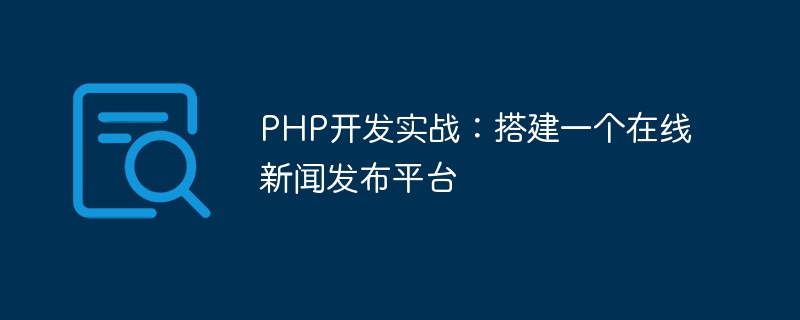

PHP development practice: building an online news release platform
With the rapid development of the Internet, news media have begun to gradually transform into online platforms, providing more convenient and instantaneous news Methods of disseminating news information. For many businesses and individuals, having their own online news publishing platform is very important and beneficial. This article will introduce how to use PHP to develop and build a simple online news publishing platform.
Step One: Environment Setup
First, we need to build an environment suitable for PHP development. It is recommended to use tools such as XAMPP or WAMP to quickly build a development environment that integrates Apache, MySQL and PHP. After the installation is complete, start the Apache and MySQL services, and create a new database to save the data of the news release platform.
Step 2: Create database and table structure
In MySQL, use the command line or visual tools to create a new database. Then, create a new data table to store information such as the title, content, and release time of the news. Ensure that the structure of the database meets the needs of the platform by defining appropriate fields and setting appropriate data types.
Step 3: Write the backend management interface
Use PHP to write a backend management interface for managing news publishing, editing and deletion operations. In the background interface, you can use HTML and CSS to design the layout and style of the page, and use PHP to handle user requests and interact with the database. Ensure the legality and security of data entered by users by using form and form validation technology.
Step 4: Implement the front-end news display page
Use PHP to write a front-end news display page, which is used to display news to users in a certain order and layout. You can use HTML and CSS to design the overall style of the page, and use PHP to read news data from the database and render it into the page. In addition, front-end technologies such as JavaScript and jQuery can be used to increase the interactivity and user experience of the page.
Step 5: Add user rights management
In order to ensure the security and controllability of the platform, different permission levels can be set for users, and users’ operations on news can be restricted based on the permission levels. For example, administrators can have full permissions, while ordinary users can only view and comment. You can use PHP's session management technology and the user table in the database to implement user login, registration and rights management functions.
Step 6: Optimize performance and security
After the development is completed, in order to improve the performance and security of the platform, some optimization work can be performed. For example, perform index optimization and query optimization on the database to reduce query time; use secure password storage and user input verification technology to prevent security threats such as malicious attacks and injections. In addition, you can consider using tools such as caching technology and CDN to improve the access speed and stability of the website.
Summary:
This article introduces how to use PHP to develop and build a simple online news publishing platform. By building a suitable development environment, creating database and table structures, writing back-end management interfaces and front-end display pages, as well as increasing user rights management and optimizing performance and security, we can realize a fully functional online news release platform. This will be a very beneficial and meaningful development project for those companies and individuals who want to achieve rapid dissemination and convenient management of news information.
The above is the detailed content of PHP development practice: building an online news publishing platform. For more information, please follow other related articles on the PHP Chinese website!